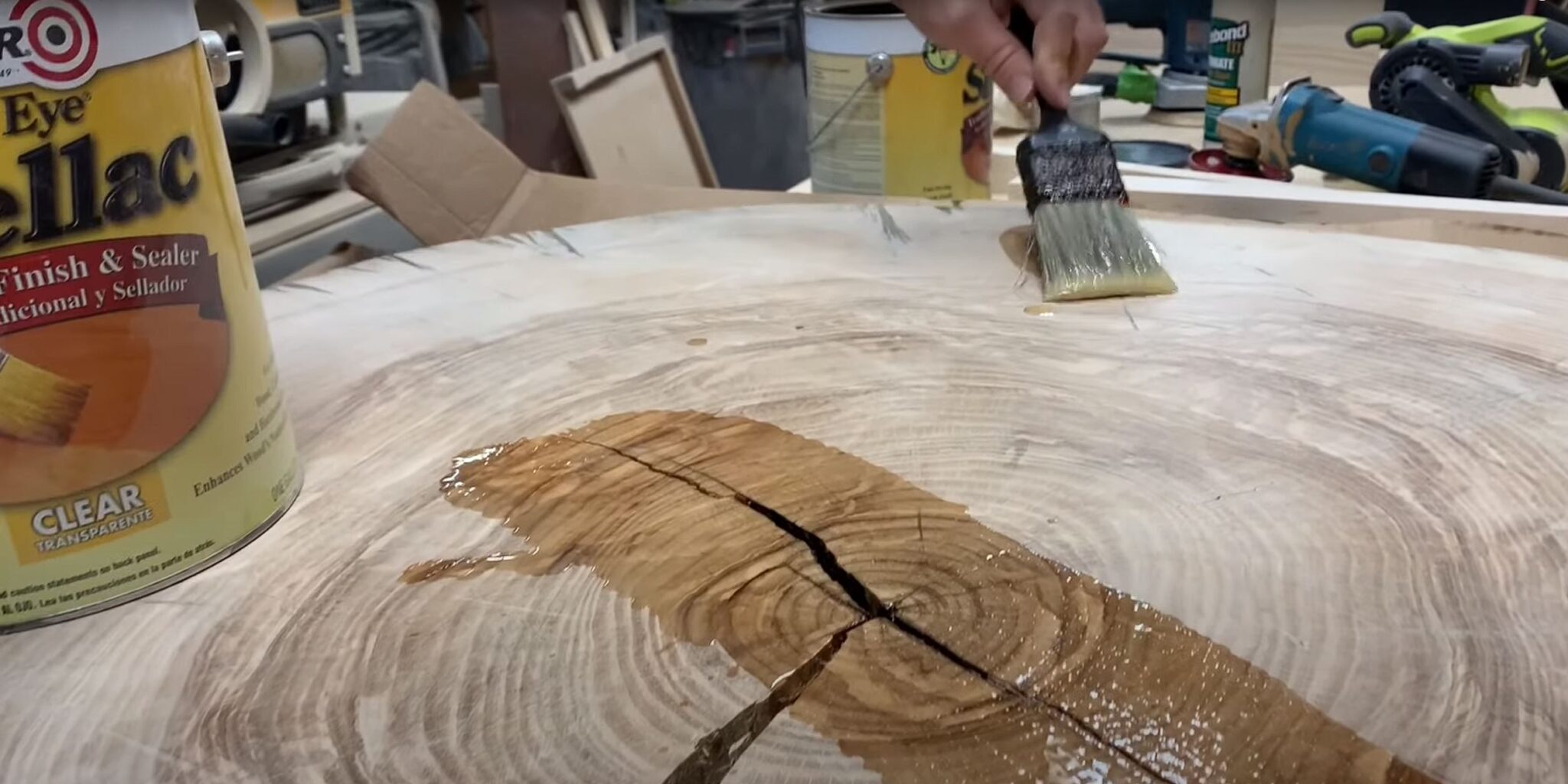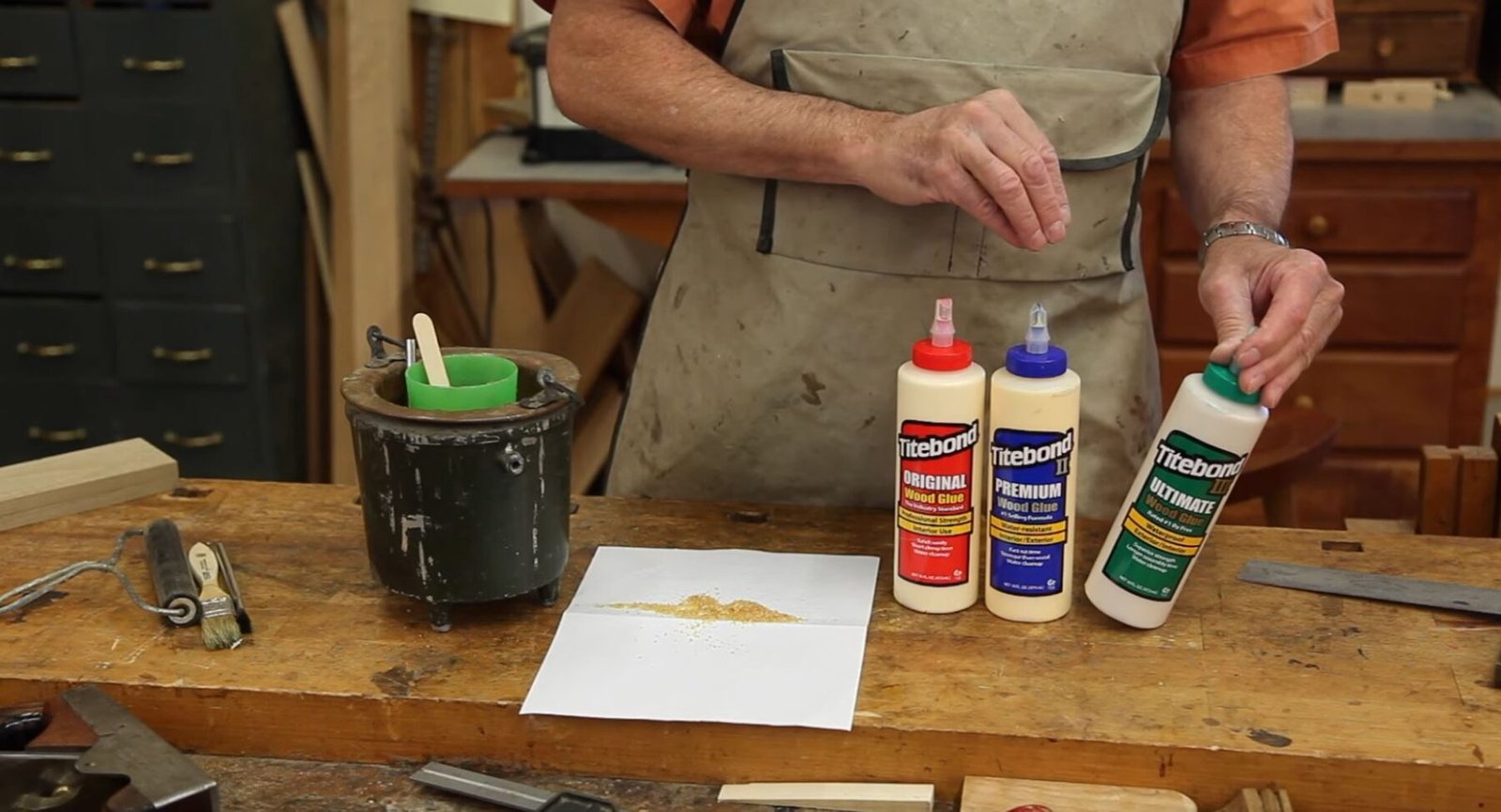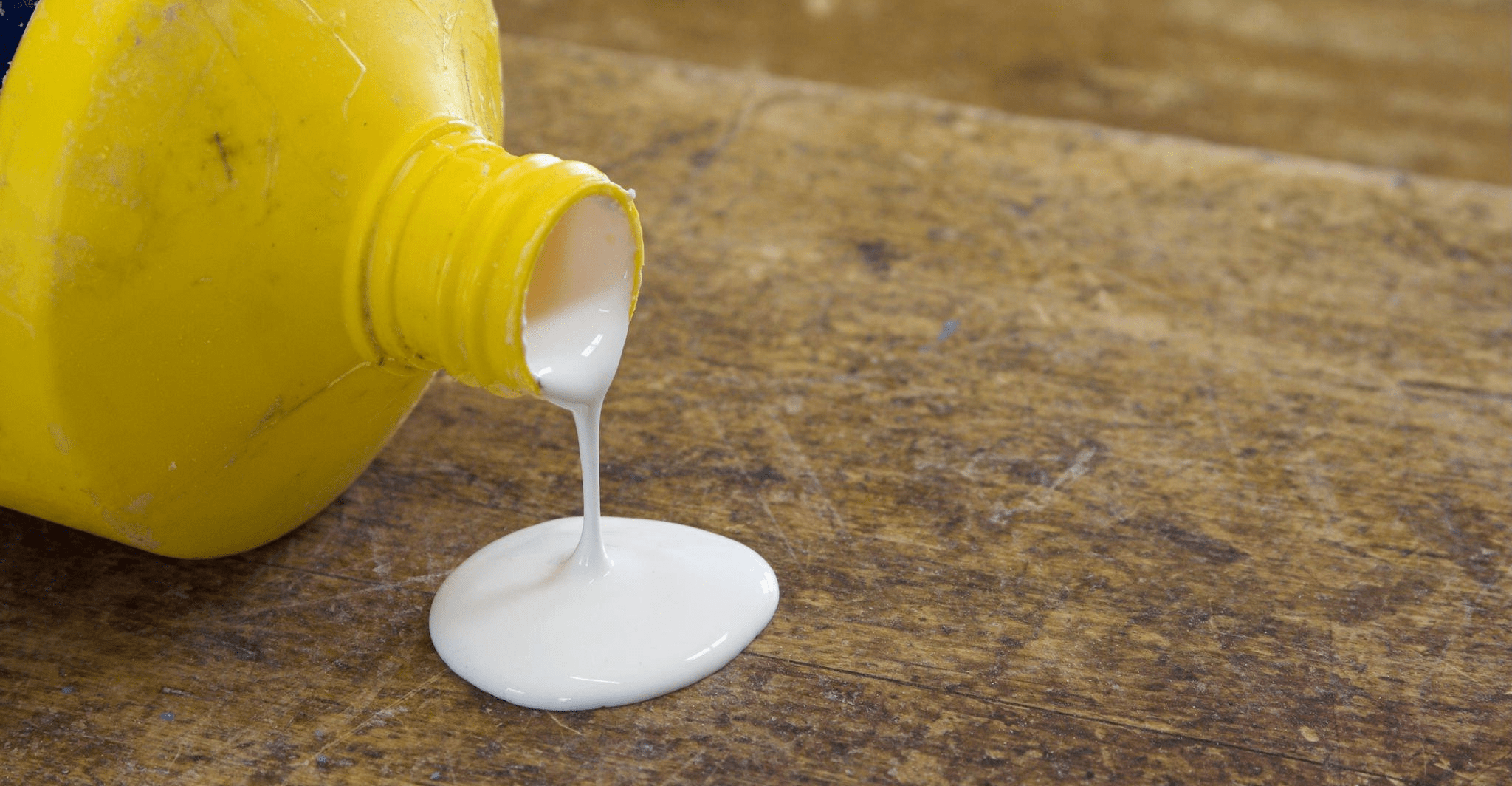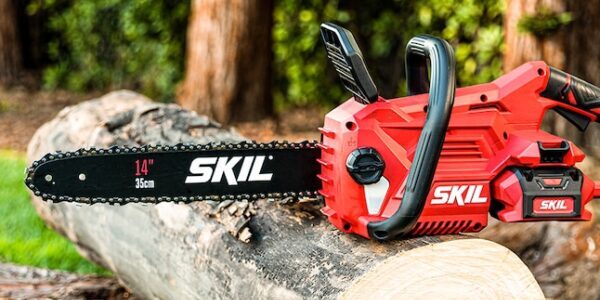Table of Contents
What is Shellac
Shellac is a traditional finish, it is a natural resin. Resin is kind of like epoxy but it’s not as strong as man-made epoxy but still very good and because it’s an alcohol it absorbs deep into the grain and is great for a first coat. Shellac will bring out the natural grain patterns of your wood and give it a nice finish.
How to Apply Shellac
- Put something down like cardboard or similar to protect your workbench or whatever you are working on as Shellac when it dries gets very sticky.
- Stir up the Shellac, and apply to your wood, start by working on all the cracks. Let it go way down into all cracks, you want it to penetrate deep.
- Keep brushing the rest of the wood and you want to work kind of fast with shellac because it dries right before your eyes.
- Sometimes you’ll see little bubbles form and that’s because it’s absorbing into the wood, you’re kind of pushing it in with your strokes
- After applying to the whole piece, let it drying. How long it takes depends on how big the wood is, temperature etc. but generally it dries pretty fast probably between two hours, two and a half hours.
Frequent Questions About Shellac
What’s the difference between Waxed and dewaxed shellac
Read our explanation here.
Will Shellac make my wood furniture water proof?
No, Shellac will not make it waterproof and water will damage the finish.
Is Shellac a good option to finish inside of cabinets and drawers?
Absolutely
How do you best apply Shellac?
Use a normal brush or a cloth and apply. Do not apply too liberally or else it will run and drip.
How is Shellac made?
Shellac is made from the natural secretion of the lac beetle, the resin is extracted and dissolved in denatured alcohol to produce the product.
Should I apply shellac first and then paint, or paint first and then shellac?
You should apply the Shellac first, then lightly sand and paint after
Can I use Shellac on my countertop?
Yes, shellac has been used for hundreds of years to finish fine wood products. However, it is not as strong or durable as a modern urethane finishes which has better resistance to watermarks and stains.
Can Shellac be used on a cutting board?
Yes. Shellac is safe on wood finishes, however I would recommend to use others plant oils, like almond, grapeseed or olive. Another option would be Tung oil, just make sure it’s 100% Tung.
Can Shellac be used on sealed hardwood floors?
Yes, it can be used pretty much on anything that needs sealing.
Can Shellac be used on wood plates to eat off of?
Technically yes, however it will not be very durable and I would suggest using flax seed oil or walnut oil instead.
What dissolves Shellac?
There’s two chemicals that will dissolve shellac, the first on is alcohol and the other one is ammonia.
How do I clean my Brush?
Since Shellac is an alcohol you won’t be able to rinse it off. I often store my brushes and rollers and things in old Shellac cans, and as long as there’s a little bit of shellac in there these brushes will not harden and get stiff
If you have any questions not answered here, post them below and we’ll add them!









